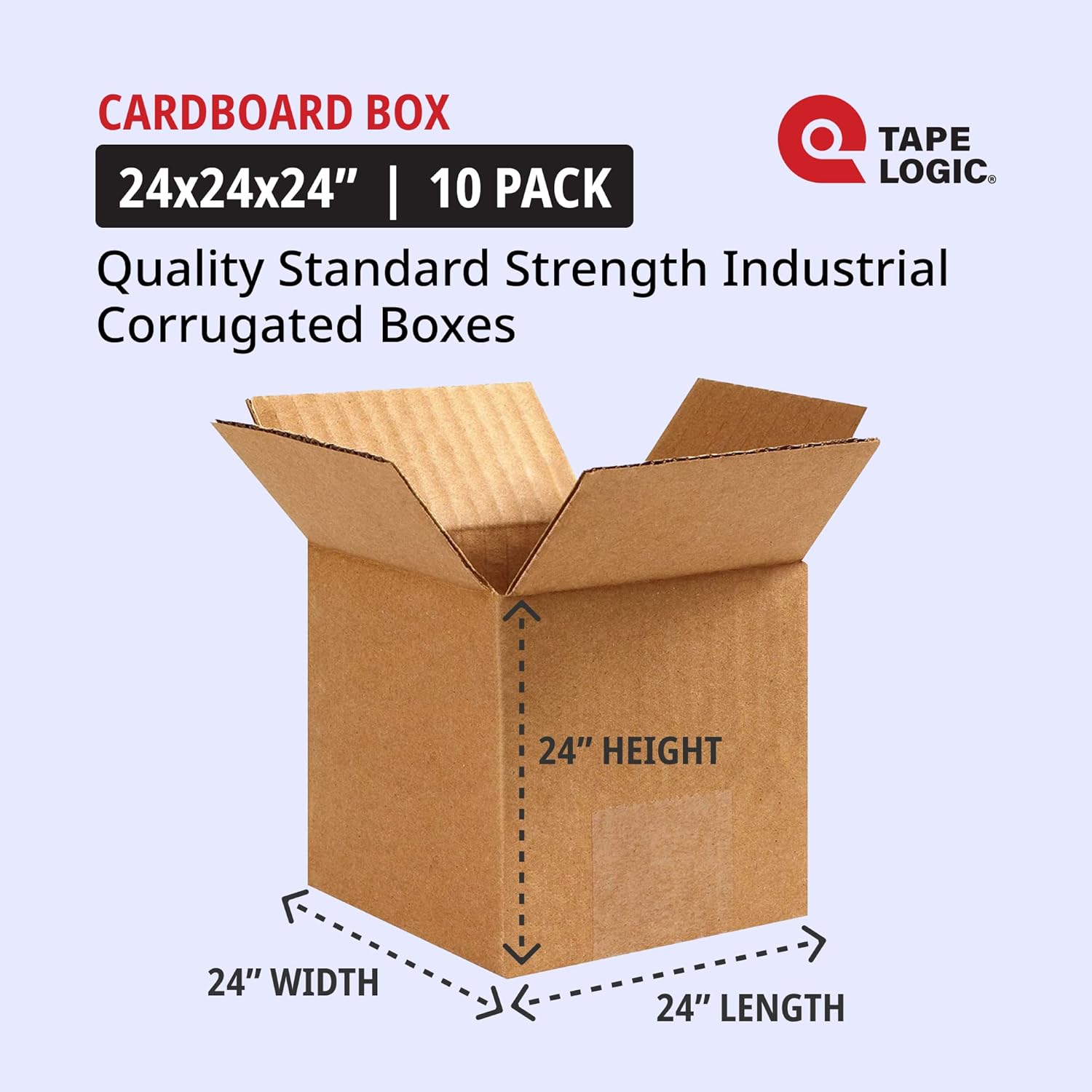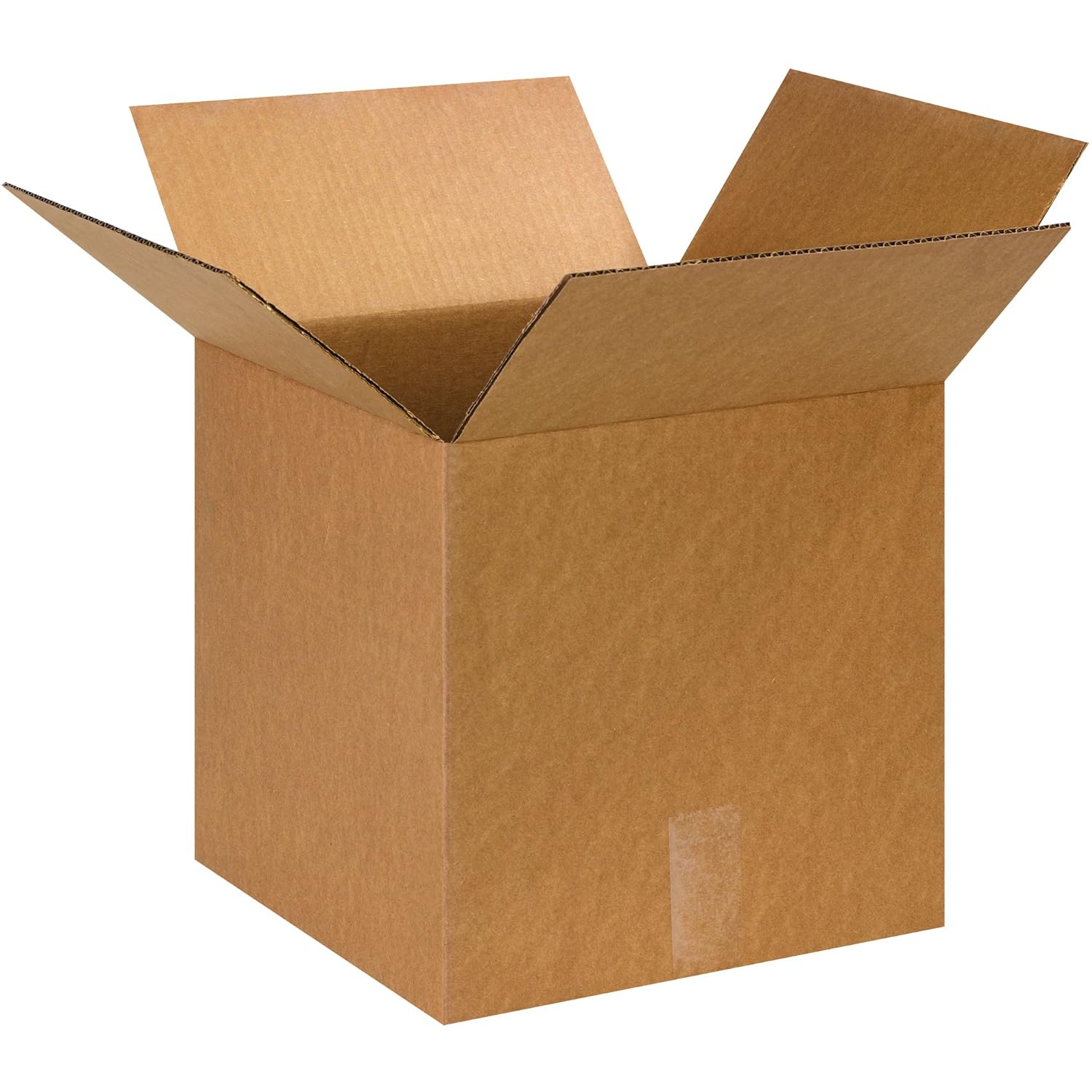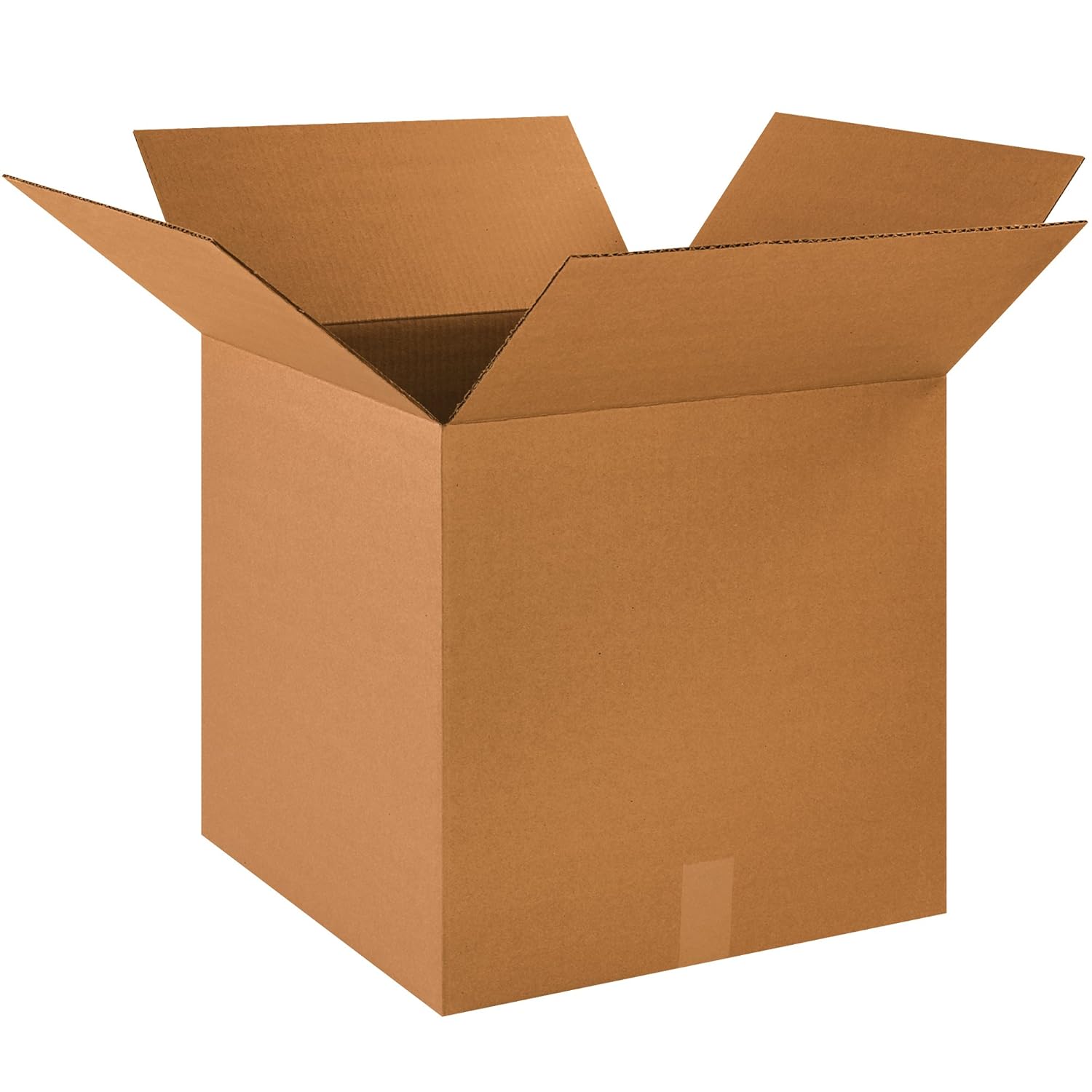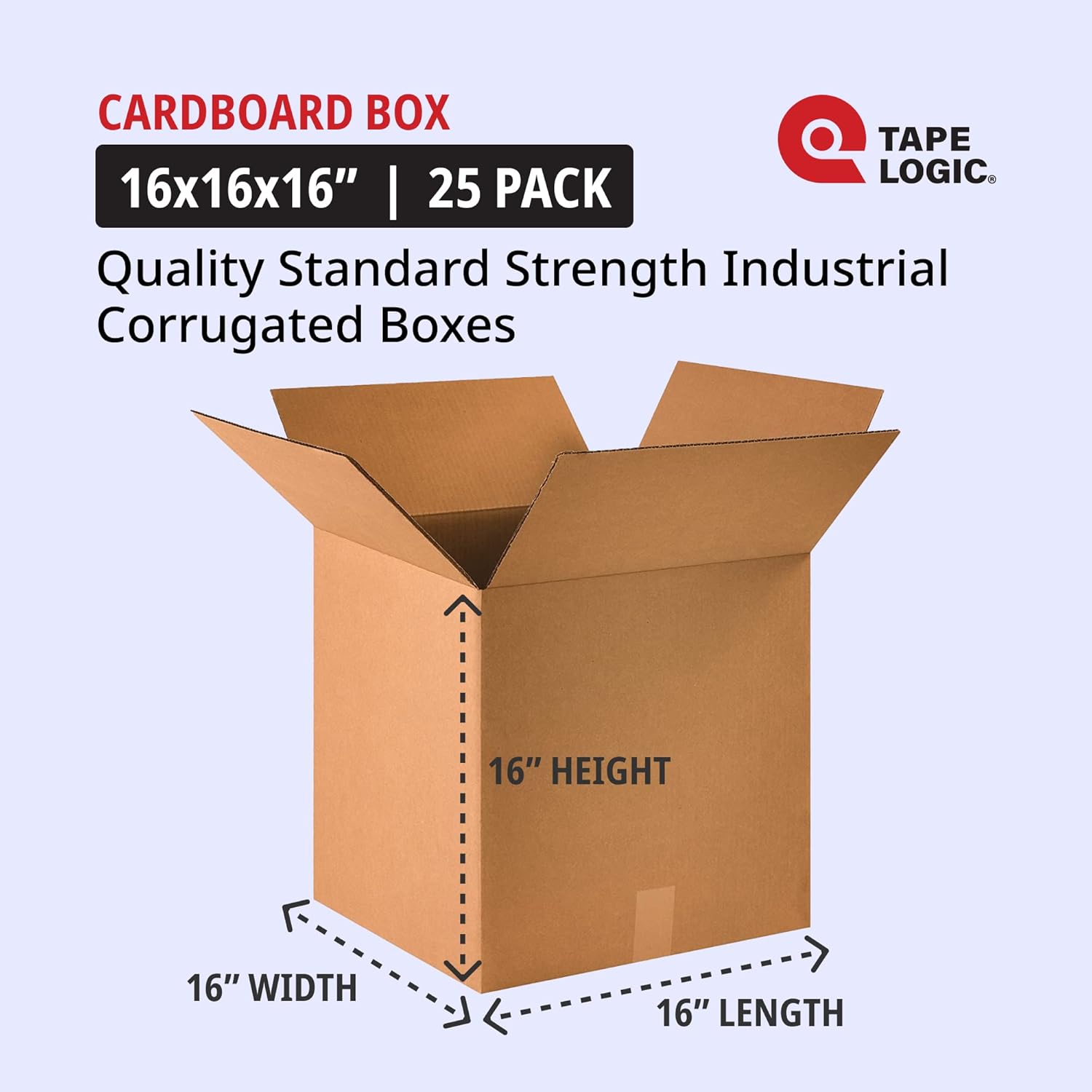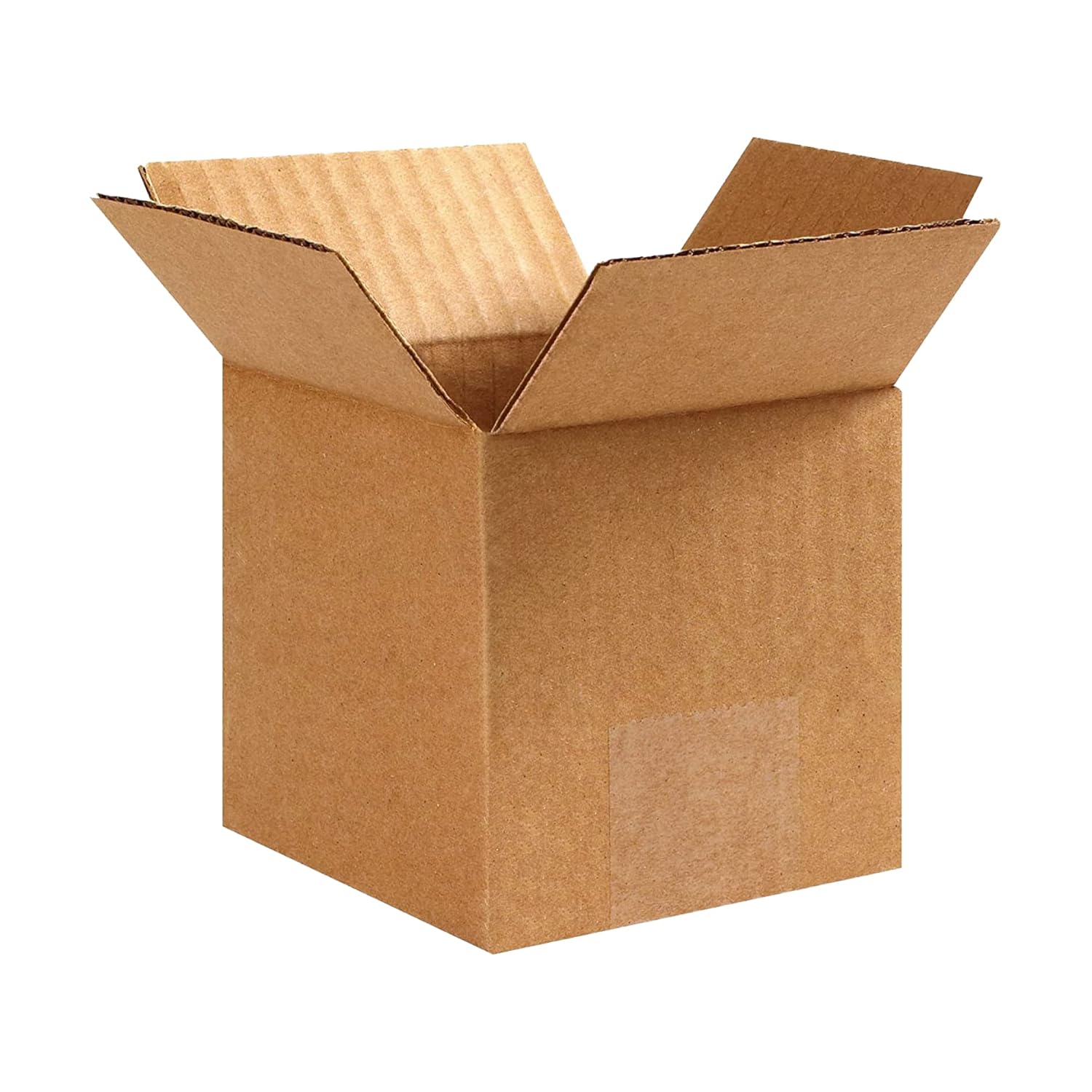APE LOGIC 25x25x25 Corrugated Boxes, Large, 25L x 25W x 25H, Pack of 10 | Shipping, Packaging, Moving, Storage Box for Home or Business, Strong Wholesale Bulk Boxes
Have you ever wished a single box could take the weight of a late-night packing binge, survive being stacked in a hot truck, and still look plain and honest enough to sit on your garage shelf?
This image is property of Amazon.com.
First Impressions
When you first lift a TAPE LOGIC 25x25x25 Corrugated Boxes, Large, 25L x 25W x 25H, Pack of 10 | Shipping, Packaging, Moving, Storage Box for Home or Business, Strong Wholesale Bulk Boxes from a flat bundle, you notice how straightforward it is. It doesn’t try to be pretty; it offers a plain brown steadiness that feels useful in a domestic way—the kind of object that quietly keeps things together while your life rearranges around it.
Product Overview
This is a pack of ten cube corrugated boxes with internal dimensions of 25 inches by 25 inches by 25 inches. They’re marketed as large, multipurpose containers suitable for shipping, packaging, moving, and storage. The boxes are manufactured from 200#/ECT-32 kraft corrugated material, and they ship flat in bundle quantities to save storage and shipping space. These cartons are described as reusable and recyclable, and they’re proudly made in the USA.
Specifications
Here’s a quick breakdown of the basic specifications so you can match them against your needs.
| Attribute | Details |
|---|---|
| Product Name | TAPE LOGIC 25x25x25 Corrugated Boxes, Large, 25L x 25W x 25H, Pack of 10 |
| Quantity | Pack of 10 |
| Internal Dimensions | 25″ L x 25″ W x 25″ H |
| Shape | Cube |
| Material | Kraft corrugated |
| Board Grade | 200# / ECT-32 |
| Reusability | Reusable, recyclable |
| Packaging | Sold in bundles, ships flat |
| Country of Manufacture | USA |
| Ideal Uses | Shipping, packaging, moving, storage, cylindrical/odd-shaped items |
| Notable Traits | Evenly disburses product weight for stacking, good for cylindrical/odd items |
This image is property of Amazon.com.
What You’re Buying Into
You’re buying a practical object: a cube that understands weight distribution and fits well with how humans stack and store things. The ECT-32 rating means these aren’t feather-light promotional boxes; they’re built to bear a reasonable load, and the cube shape is deliberate—you’re getting something meant to prevent tipping and to handle round or awkward shapes more easily than a long shallow box would.
Material and Build: How They’re Made and What That Means for You
The boxes are made from 200# kraft corrugated board with an ECT-32 rating. In plain terms, that tells you the board is single-wall corrugated and tested for edge crush; it’s meant to withstand routine stacking and handling without compressing too quickly.
You can feel the texture of the kraft paper and the resistance of the flutes when you fold the box into shape. It’s the kind of material that will take a fair amount of tape and stress before you’ll worry about immediate failure. Because they ship flat, you’ll assemble them at the last practical moment—useful for minimizing the clutter that always accompanies moving or storage projects.
This image is property of Amazon.com.
Stacking and Strength
These cube boxes are designed to disburse product weight evenly, which is the quiet engineering trick that makes a lot of difference when you start stacking them. When you place several filled cubes on a pallet or in a van, the flat faces and equal dimensions reduce the risk of leaning or concentrated pressure points.
You should still be thoughtful about what you stack where. Heavier items should go at the bottom of a stack to protect the boxes below, and it helps to arrange weight centrally rather than pressing everything against one corner. But if you’re loading a storage shelf or an attic, the uniformity of these cubes is forgiving: you can stack them with confidence in most household or small-business contexts.
Packing Odd Shapes and Cylindrical Items
Because the box is a cube, it gives you room to manage items that don’t sit naturally in a rectangular prism. Cylindrical objects, lampshades, and oddly shaped decor will fit without too much wasted volume on one axis, which reduces the need for extra packing materials.
You’ll still want to protect fragile curvature with bubble wrap or crumpled kraft paper. The cube shape offers the advantage of letting those protective materials settle around an item with less awkward empty space, which often means fewer voids and less movement in transit.
This image is property of Amazon.com.
Moving and Storage: Everyday Use
If you’re moving a bedroom, a studio, or a small office, these boxes serve as a sort of neutral laborer. They’re large enough to handle medium-size household goods—bedding, small appliances, stacked books, coats—without forcing you to lift something excessively heavy when loaded correctly.
For long-term storage, the kraft corrugated material holds up to repeated opening and closing better than flimsier alternatives. The fact that they ship flat is convenient for you: you store a dozen empty boxes under a bed or in the trunk until you need them, rather than dedicating a storage corner to five preassembled boxes taking up real cubic feet.
Shipping and Handling: What to Expect
If you plan to put these on a carrier, remember that carriers look at size, weight, and packaging integrity. The ECT-32 rating is suitable for typical ground shipping, and the cube format can help you meet carrier requirements for stable loads. Because the packs ship flat, you’ll assemble and tape them before handing them to the carrier. Use reinforced tape along the seams and a couple of cross-tape strips across the top and bottom when shipping heavier contents.
You’ll want to weigh and measure your filled box carefully; oversized dimensions and high weight can change your shipping cost. But structurally, these boxes give you a reliable platform for most ground and local courier shipments.
This image is property of Amazon.com.
Appearance and Practical Aesthetics
They’re not decorative. The kraft brown finishes with occasional printed instructions or bar codes feel like a reliable neighbor rather than a flashy guest. For personal moves or small-business packaging, that plainness is an asset: it’s easy to label, stamp, or write on, and it signals that the contents are being treated as functional objects headed somewhere practical.
Think of them as modest work clothes: they don’t call attention to themselves, but they carry the essential load.
Environmental Considerations
The boxes are recyclable and reusable. Kraft corrugated board is among the most commonly recycled packaging materials. If you’re mindful about the lifecycle of your packing supplies, these boxes fit well into that habit—you can disassemble and flatten them for either reuse or recycling depending on their condition after use.
Because they’re made in the USA, you’re also reducing the transportation footprint compared to some imported alternatives, and you’re supporting local manufacturing. That might matter to you if you prefer more domestically sourced goods or want predictable supply chains.
This image is property of Amazon.com.
How They Ship and Store Before Use
They arrive in bundled, flat form. That means you’ll fold and tape them into the shape you need. Flat shipping saves you space at home before you need the box, and it reduces shipping emissions and costs. You’ll appreciate this if you order in bulk and don’t have a large staging area for assembled cartons.
You’ll also notice that bend lines and flaps are pre-creased for easier formation. If you’re assembling many at once, you can work in an assembly line: bottom flaps first, tape them, fill, then seal.
Table: Quick Use-Cases and Packing Advice
| Use-Case | Best Practices | Caution |
|---|---|---|
| Moving household goods | Pack heavy items low, use handles (if any) or lift from bottom, tape seams thoroughly | Avoid overpacking with heavy dense items to prevent strain |
| Shipping fragile decor | Wrap with bubble wrap or kraft paper, use void fill to prevent movement | Add fragile labeling and use cross-tape for reinforcement |
| Storing seasonal items | Stack in attic/garage; label sides for quick retrieval | Moisture-prone environments may require plastic bin liners |
| Packing cylindrical items | Lay items on their side, use padding along curves for even support | Prevent rolling by adding padding at ends |
| Wholesale fulfillment | Standard size for pallet stacking; label with SKU and handling info | Ensure carrier size-weight pricing remains favorable |
This image is property of Amazon.com.
Weight, Load Limits, and Practical Strength
The ECT-32 rating suggests these boxes can be trusted for typical stacking and mid-range loads. They are not heavy industrial double-wall boxes, but they’re also not single-thin novelty cartons. For you, that means they’ll take the weight of books, clothing, kitchenware, and many business shipments without immediate failure.
If you stack multiple filled cubes, aim to distribute weight evenly—one overfull heavy box stacked on lighter boxes increases the risk of collapse. For high-density or heavy material (stone, certain hardware, large volumes of books) consider double-walled alternatives or limit the weight per box to something manageable for lifting and for the box’s integrity—typically under 50–60 lbs for these boards; adjust depending on your comfort and carrier guidelines.
Handling, Tape, and Assembly Tips
When you assemble, fold on the pre-creased lines and form the bottom flaps so that the two shorter flaps meet first and the two longer ones close over them. Use a strong packing tape—preferably 2–3” wide—and apply at least three strips across the bottom seam: one down the middle and one at each edge where the flaps meet. Add cross tape if the contents are heavy.
When sealing the top after loading, use the same approach. Reinforce the corners with tape if you think the box may get jostled. If you have a lot of boxes to tape, get a tape dispenser with a sharp blade and tension control; it’ll speed the process and reduce aggravation.
This image is property of Amazon.com.
Labeling and Organization
Label the sides and top of the box. Because these are a uniform cube, the label is easy to find when boxes are stacked. Use a permanent marker or printed labels, and write a brief inventory and a room name or SKU. Write orientation instructions—“This Side Up” or “Fragile”—and place them where a mover or worker will see them quickly.
If you use these boxes for storage in a garage or attic, create an index sheet or spreadsheet that maps box numbers to contents. The cube shape makes boxes stack predictably; a clear labeling system prevents unnecessary rummaging.
Reuse and End-of-Life
After use, flatten the boxes and store them or place them in your recycling stream if they’re damaged. If they’re in good condition, you can reuse them several times for storage and local moves. You’ll find they usually remain sturdy until the corners or flutes take repeated bad knocks. Even when worn, the kraft paper can be repurposed for cushioning or craft uses before recycling.
Cost and Value Proposition
These are wholesale bulk boxes designed to offer a balance of cost and strength. Buying a pack of ten will usually be cost-efficient compared to single boxes bought individually. If you’re moving or running a small business shipping a moderate volume, this pack is likely to lower your per-box cost.
Think about the time saved in packing and the reduced stress on fragile items from better-fitting cubic dimensions—those are indirect savings that complement the straightforward price-per-box calculation.
Pros and Cons
You’ll want to weigh the tangible strengths against a few limitations.
Pros:
- Even weight distribution ideal for stacking.
- Cube shape accommodates round or awkward items better than elongated boxes.
- ECT-32 board offers solid mid-range strength.
- Ships flat to save storage space.
- Reusable and recyclable; made in the USA.
Cons:
- Not a double-wall or extra-heavy-duty option for very heavy industrial loads.
- The 25” cube can become heavy if you load dense materials—lift carefully.
- Plain kraft finish isn’t decorative if you need aesthetic presentation.
Who This Works For
If you are:
- Moving a studio apartment or packing a small family’s belongings,
- Running a small e-commerce business that ships mid-sized items,
- Storing off-season clothing, linens, or furniture pieces,
- Packing cylindrical or oddly shaped items that don’t fit well in rectangular boxes,
then these boxes suit you. If you’re shipping heavy machinery, bricks, or dense solids, consider a heavier duty option. But for most household and small-business needs, these are reliable, no-nonsense helpers.
Practical Scenarios and Real-World Use
Picture a Sunday morning in which you box up a life: curtains folded neatly, a lamp wrapped in paper and bubble wrap, familiar photo frames cushioned and marked “fragile.” The cube gives you room to set stacks of folded sweaters without crushing them. Your partner stacks two across, and they stay put, balanced and calm amid the turbulence of moving trucks and open drawers.
For a small online shop, you’ll find the cube useful when your product line includes rounded items: jars of homemade jam, cylindrical cans, or handmade ceramics. You can nest protective materials around goods more symmetrically inside a cube than in a long rectangular box. That symmetry reduces movement and thus reduces the possibility of damage.
For seasonal storage—say, winter blankets—the box takes a sensible volume without forcing you to compress things into awkward shapes. It’s easy to slide a stack into an attic or on a shelf; label it and you’ll find it months later just where you left it.
Alternatives You Might Consider
If you regularly pack heavy items, look at double-wall corrugated boxes or boxes with higher board grades (ECT-44 or higher). For long-distance shipping of fragile items, corrugated boxes with interior corrugation or foam inserts could be better.
If aesthetics matter—for gifts or retail presentation—you might choose printed or white retail boxes instead of kraft corrugated. The trade-off is that you’ll lose some of the environmental and cost efficiency these kraft cubes offer.
Common Questions You Might Have
- Will these boxes protect fragile items? Yes, if you pair them with appropriate internal cushioning and tape them well. The box provides structure; padding provides protection.
- How many will fit in my moving truck? That depends on the truck size and how you stack them with other items. Because they’re cubic, they’re efficient in terms of volume, and you can predict how many will fit more easily than with irregular boxes.
- Can I reuse them? Yes. Flatten them when they’re not in use and reuse them for storage or local moves until the flutes start to break down.
Tips to Get the Most from Your Boxes
- Don’t overfill. A 25” cube can hold a lot; keep individual box weight manageable for lifting and for the box’s integrity—aim for boxes you can lift safely.
- Reinforce the bottom. Use strong tape and consider filament tape for heavier loads.
- Use padding. Even with a solid box, fragile items need bubble wrap, foam, or kraft paper to prevent internal movement.
- Label clearly. Because these cubes stack predictably, labeling the sides and tops saves time when unpacking.
- Store flat until use. Save space and avoid clutter; assemble only when ready to pack.
- Consider moisture protection. In damp storage, add a plastic bag or liner for textiles.
Final Thoughts
You’re choosing a functional, honest solution: a cube that holds things steady, ships flat to save you space, and offers enough strength for most domestic and small-business needs. The TAPE LOGIC 25x25x25 Corrugated Boxes, Large, 25L x 25W x 25H, Pack of 10 | Shipping, Packaging, Moving, Storage Box for Home or Business, Strong Wholesale Bulk Boxes feels like an agreement you can count on: put your things in, seal them, and let the box do what boxes have always done—protect, hold, and make order out of the inevitable disorder of moving and storing.
If you want a straightforward, recyclable, made-in-the-USA cube that balances cost, strength, and practicality, these boxes are worth trying. They won’t make packing exciting, but they will make it steadier, and sometimes steadiness is the only quiet luxury you need.
Disclosure: As an Amazon Associate, I earn from qualifying purchases.



